Jurassic dinosaurs list with pictures and facts.
On this page you’ll find a list of some of the best-known dinosaurs of the Jurassic Period, together with pictures and facts on each dinosaur.
As well as famous dinosaurs such as Stegosaurus and Diplodocus, you’ll also meet less well-known species, including dinosaurs with crests and horns, the first dinosaur to be named , and a dinosaur named after the stars of Jurassic Park…
Related Pages
- You can find out more about the Jurassic Period here: Jurassic Period Facts
- Not all Jurassic animals were dinosaurs! Discover non-dinosaur animals that lived in the Jurassic Period here: Jurassic Animals List with Pictures & Facts
- Find out about the different types of dinosaur (including theropods, saurischians, etc.) here: Types of Dinosaur
- Commonly-asked Jurassic questions answered: When Was The Jurassic Period?
- Want to know more? Check out these awesome dinosaur books.
Discover More Dinosaurs!
Jurassic Dinosaurs: Introduction
(Scroll down to see the dinos!)
The Jurassic Period is the second of the three periods of the Mesozoic Era.
At the end of the preceding Period – the Triassic Period – there had been a mass extinction of species. This was probably caused by widespread volcanic activity. During that tumultuous time, 50% of all species became extinct, including the dinosaurs’ main rivals, the crocodile-like pseudosuchians.
The dinosaurs seized their chance, quickly becoming the dominant land animals of the period. Let’s meet some Jurassic Dinosaurs…
Dinosaurs That Lived In The Jurassic Period
Allosaurus
- Type of Dinosaur: Theropod
- Existed: Late Jurassic, 155–150 Mya
- Where found: North America
- Estimated length:5 - 12 m (28 - 39 ft.)
Allosaurus was one of many Jurassic dinosaurs discovered in the Morrison Formation (a layer of rocks formed in the Jurassic Period), located in the western United States. It was named by famous fossil collector Othniel Charles Marsh. Most allosaurus specimens have been found in the USA, but allosaurus fossils have also been discovered in Portugal.
Allosaurus was a large, bipedal theropod. It was an apex predator that would have preyed on sauropods and Stegosauria such as Stegosaurus.
- You can find out more about this Jurassic dinosaur here: Allosaurus Facts
Apatosaurus
- Type of Dinosaur: Sauropod
- Existed: Late Jurassic, 152–151 Mya
- Where found: Morrison Formation, western United States
- Estimated length: 25 m (82 ft.)
Apatosaurus is a large sauropod dinosaur that lived in North America in the Late Jurassic Period. Like Allosaurus, it was discovered in the Morrison Formation by Othniel Charles Marsh.
Marsh later discovered a similar dinosaur, which he named Brontosaurus (see further down the page). Early in the 20th century it was decided that the two dinosaurs were one and the same. Because Apatosaurus was found first, all Brontosaurus specimens were renamed as Apatosaurus.
However, research carried out in the 21st century now tells us that the dinosaurs are in fact different. Brontosaurus is therefore once again considered to be a separate type of dinosaur.
- You can find out more about this dinosaur here: Apatosaurus Facts
Archaeopteryx
- Type of Dinosaur: Theropod
- Existed: Late Jurassic, 150.8–148.5 Mya
- Where found: Bavaria, southern Germany
- Estimated length: 0.5 m (20 in.)
The near-perfect Archaeopteryx skeleton, found in 1861 in Germany, is one of the most famous of all dinosaur discoveries. Its existence provided scientists such as Charles Darwin and Thomas Henry Huxley with evidence not just for evolution, but also that birds evolved from dinosaurs.
Archaeopteryx possesses dinosaur characteristics such as teeth, clawed wings and a tail, together with bird characteristics such as a wishbone and flight feathers. Scientists are unsure whether archaeopteryx was capable of true, flapping flight, or whether it was just a sophisticated glider.
- You can find out more about this dinosaur here: Archaeopteryx Facts
Brachiosaurus
- Type of Dinosaur: Sauropod
- Existed: Late Jurassic, 154–153 Mya
- Where found: Colorado, USA
- Estimated length: 18-21 m (59-69 ft.)
Brachiosaurus is a typical sauropod, with a long neck and tail, and an enormous body supported by four tree-trunk-like legs. The first Brachiosaurus specimen was discovered in 1900 in Colorado, USA, by American paleontologist Elmer S. Riggs.
At the time of its discovery it was believed to be one of the largest dinosaurs ever to have lived. Although larger dinosaurs have since been discovered, Brachiosaurus was still a true giant, reaching estimated lengths of 21m (69 ft.)
- You can find out more about this dinosaur here: Brachiosaurus Facts
Brontosaurus
- Type of Dinosaur: Sauropod
- Existed: Late Jurassic, 156.3-146.8 Mya
- Where found: Morrison Formation, North America
- Estimated length: 22 m (72 ft.)
The name Brontosaurus means ‘thunder lizard’. It was named by US paleontologist Othniel Charles Marsh. This huge sauropod lived in North America in the Late Jurassic Period.
Scientists believe that brontosaurus (and other sauropods) may have been able to crack its huge tail like a whip. This may have served as a deterrent to predators.
Camarasaurus
- Type of Dinosaur: Sauropod
- Existed: Late Jurassic, 155-145 Mya
- Where found: North America
- Estimated length: 18 m (59 ft.)
Camarasaurus is the most commonly-found sauropod of the Late Jurassic in North America. Its name means ‘chambered lizard’, and refers to the hollowed-out bones that it (and other sauropods) possessed. These not only lightened the skeleton, but also contained air sacs that helped the enormous dinosaurs to breathe.
Camptosaurus
- Type of Dinosaur: Ornithopod
- Existed: Late Jurassic
- Where found: North America
- Estimated length:5-7 m (11.5-23 ft.)
Camptosaurus was an ornithopod that lived in North America during the Late Jurassic Period. Many Camptosaurus specimens have been found in the Morrison Foundation in the western USA. It was likely that Camptosaurus was common during the Late Jurassic in this region.
Ornithopods are a group of ornithischian dinosaurs whose members had sophisticated chewing mechanisms for eating plant matter.
Ceratosaurus
- Type of Dinosaur: Theropod
- Existed: Late Jurassic, 153-148 Mya
- Where found: North America
- Estimated length: 6 m (20 ft.)
Ceratosaurus is another of the many dinosaurs found in the Morrison Formation in the western United States. This predatory dinosaur had a horn on its nose and prominent ridges over its eyes.
Clusters of fossilized Ceratosaurus footprints suggest that it may have hunted in packs. It may have targeted prey such as stegosaurus and infant sauropods such as Apatosaurus and Brachiosaurus.
- You can find out more about Ceratosaurus on this page: Ceratosaurus Facts
Compsognathus
- Type of Dinosaur: Theropod
- Existed: Late Jurassic-Early Cretaceous, 150.8–140 Ma
- Where found: Germany & France
- Estimated length:6 m (2 ft.)
Compsognathus was a turkey-sized, meat-eating dinosaur. Remains of this fast-moving predator have been found preserved with their lizard prey still inside their bodies. For many years Compsognathus was the smallest-known dinosaur. (Smaller dinosaurs, such as microraptor, have since been found.)
Dilophosaurus
- Type of Dinosaur: Theropod
- Existed: Early Jurassic, 193 Mya
- Where found: Arizona, USA
- Estimated length: 6 m (19.5 ft.)
Dilophosaurus was an early Jurassic theropod. This distinctive dinosaur had a pair of thin, bony crests on its head. (The dinosaur’s scientific name means ‘lizard with two crests’.) The crests, which narrow into sharp points at the rear, may have been used as a display by males.
Diplodocus
- Type of Dinosaur: Sauropod
- Existed: Late Jurassic, 154-152 Mya
- Where found: xxx
- Estimated length: 27 m (89 ft.)
Diplodocus was one of the more common large dinosaurs to be found in the Morrison Formation in western USA. The hind legs of Diplodocus were longer than the front legs and its body sloped downwards from the hips to the shoulders.
It is thought that Diplodocus was able to rear up on its hind legs, using its gigantic tail as a prop. This would have enabled the huge lizard to reach foliage that would otherwise have been out of reach.
- You can find out more about this dinosaur here: Diplodocus Facts
Drinker
(No picture available)
- Type of Dinosaur: Neornithischian
- Existed: Late Jurassic
- Where found: Wyoming, USA
- Estimated length: 2 m (6 ft.)
Drinker was named after famed US paleontologist Edward Drinker Cope. It was discovered in the Morrison Formation in the USA, and described (i.e. officially named) in 1990. Drinker’s wide feet suggest that it may have lived in swampy habitats.
Huayangosaurus
- Type of Dinosaur: Stegosaurian
- Existed: Middle Jurassic, 165 Mya
- Where found: Dashanpu Quarries, China
- Estimated length: 4 m (13 ft.)
Huayangosaurus was an early stegosaurian that lived in what is now China during the Middle Jurassic. Like all stegosaurians, it is an ornithischian (bird-hipped), plant-eating dinosaur that walked on four legs.
Huayangosaurus is the smallest-known stegosaurian. It had two rows of spike-like plates running along its back, and a spiked tail.
Lesothosaurus
- Type of Dinosaur: Ornithischian
- Existed: Early Jurassic, 199-189 Mya
- Where found: Lesotho, Southern Africa
- Estimated length: 1 m (3.3 ft.)
Lesothosaurus was a small, slender dinosaur. Its light build and long legs suggest that it was a swift runner. One of the earliest ornithischians, Lesothosaurus would have eaten plants with a chopping motion, rather than with the chewing motion used by later ornithischians (who had developed cheeks that enabled them to do so).
Megalosaurus
- Type of Dinosaur: Theropod
- Existed: Middle Jurassic, 166 Mya
- Where found: England, possibly France
- Estimated length: 9 m (30 ft.)
Megalosaurus was the first dinosaur to be named. It was one of the three species used by English paleontologist Richard Owen to present a ‘new’ type of animal to the world – the dinosaurs.
Megalosaurus walked on its hind legs, using its tail as a counterbalance. It was a predator, and its likely prey would have included sauropods and stegosaurians.
- You can find out more about this dinosaur here: Megalosaurus Facts
Ozraptor
(No picture available)
- Type of Dinosaur: Theropod
- Existed: Middle Jurassic, 170 Mya
- Where found: Western Australia, Australia
- Estimated length: (possible) 3 m (10 ft.)
All that we know about Ozraptor comes from a single fossil. The fossil, part of a leg bone, was discovered by a group of schoolboys in 1966. At first it was thought to be from a prehistoric turtle. Only in the 1990’s was the specimen identified as being part of a dinosaur.
Ozraptor is one of the earliest-known Australian dinosaurs.
Sarcosaurus
- Type of Dinosaur: Theropod
- Existed: Early Jurassic, 194 Mya
- Where found: England
- Estimated length:5-6 m (12-20 ft.)
Sarcosaurus was a predatory dinosaur that lived in England during the Early Jurassic Period. Its name means ‘flesh lizard’. All that we know about this dinosaur comes from a pelvis, a vertebra and a partial femur.
Stegosaurus
- Type of Dinosaur: Stegosaurian, Ornithischian
- Existed: Late Jurassic, 155-150 Mya
- Where found: Morrison Formation, western US
- Estimated length: 9 m (30 ft.)
Stegosaurus is one of the best known Jurassic dinosaurs. It was a heavily-built plant-eater. Its forelegs were shorter than its hind legs, giving its body a downwards slant.
The most distinctive feature of the Stegosaurus is the two rows of large plates that run along its back. These may have used as a defense against predators, or as a means of controlling the animal’s body heat.
- You can find out more about this Jurassic dinosaur here: Stegosaurus Facts
Tianchisaurus
(No image available)
- Type of Dinosaur: Ankylosauria
- Existed: Middle Jurassic
- Where found: China
- Estimated length: 3 m (10 ft.)
Tianchisaurus was an early Ankylosaurian dinosaur found in China. (The best-known Ankylosaurian is the Ankylosaurus, which lived in the Late Cretaceous Period.)
The first Tianchisaurus to be found was given the species name Jurassosaurus nedegoapeferima. The second part of the name is made of the first letters of the surnames of the stars of the Jurassic Park film (namely: Sam Neill, Laura Dern, Jeff Goldblum, Richard Attenborough, Bob Peck, Martin Ferrero, Ariana Richards, and Joseph Mazzello.)
The first part of the name has now been changed to Tianchisaurus, but the second part remains.
Vulcanodon
- Type of Dinosaur: Sauropod
- Existed: Early Jurassic Period, 199-188 Mya
- Where found: Zimbabwe
- Estimated length:5 m (21 ft.)
Vulcanodon was an early sauropod that inhabited southern Africa in the Early Jurassic Period. Its name means ‘Vulcan tooth’. This refers to the volcanic rock in which it was found, and the nine sharp teeth that were found with the specimen.
It was later found that the fossil was found in sandstone beneath the volcanic rock, and that the teeth in fact belonged to another dinosaur.
Jurassic Dinosaurs List: Conclusion
We hope that you have enjoyed finding out about some of the amazing dinosaurs that lived in the Jurassic Period.
You can discover more about dinosaurs and the Mesozoic Era on the following pages:
- Find out more about the Triassic Period: Triassic Period Facts
- Find out more about the Jurassic Period: Jurassic Period Facts
- Find out more about the Cretaceous Period: Cretaceous Period Facts
- Become a dinosaur expert: Dinosaur Facts

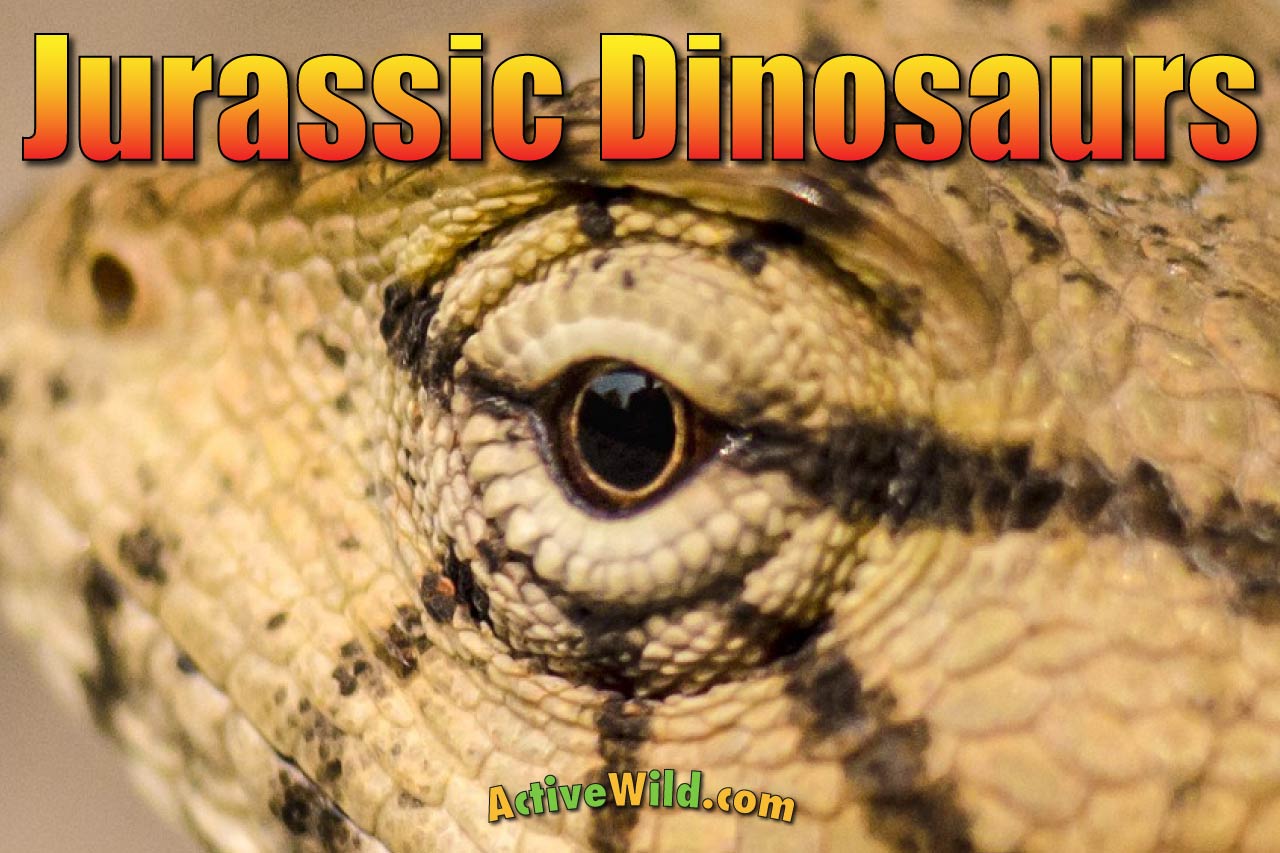
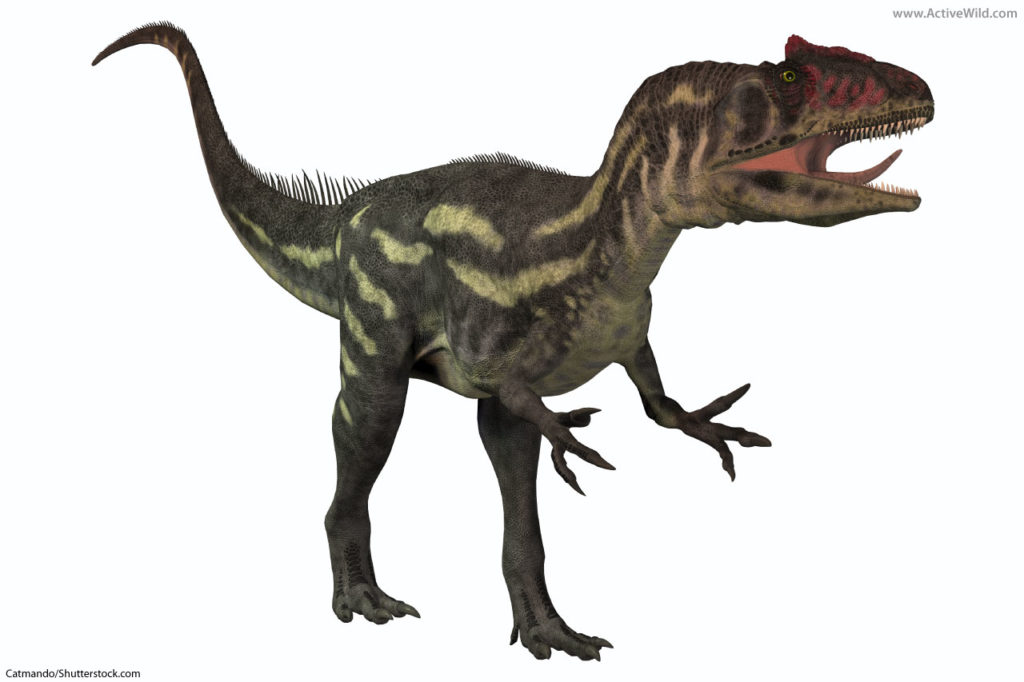
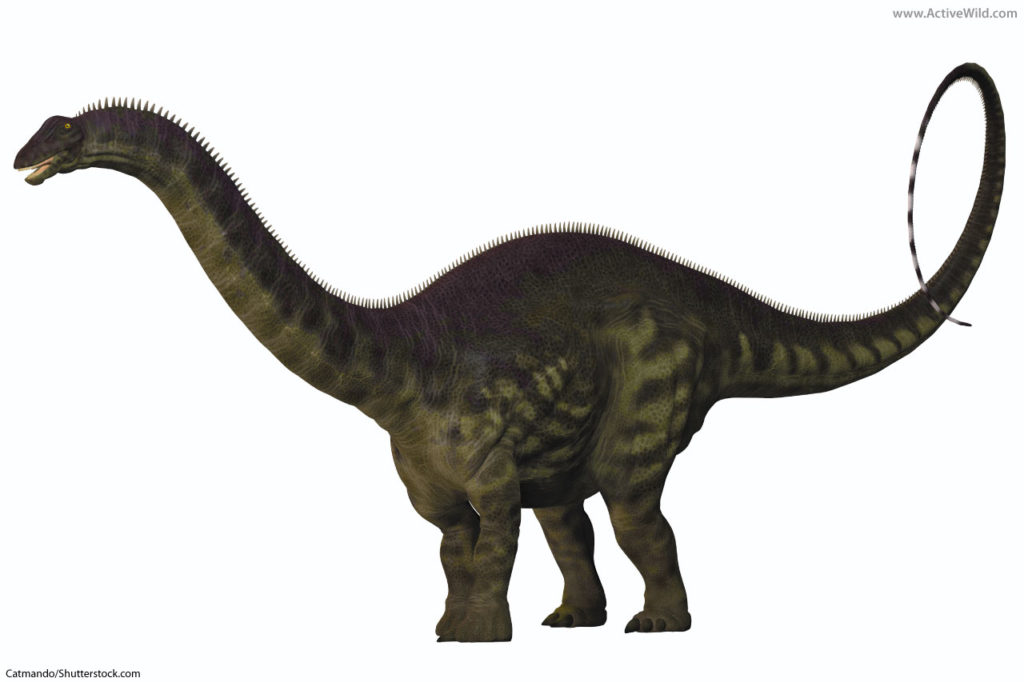




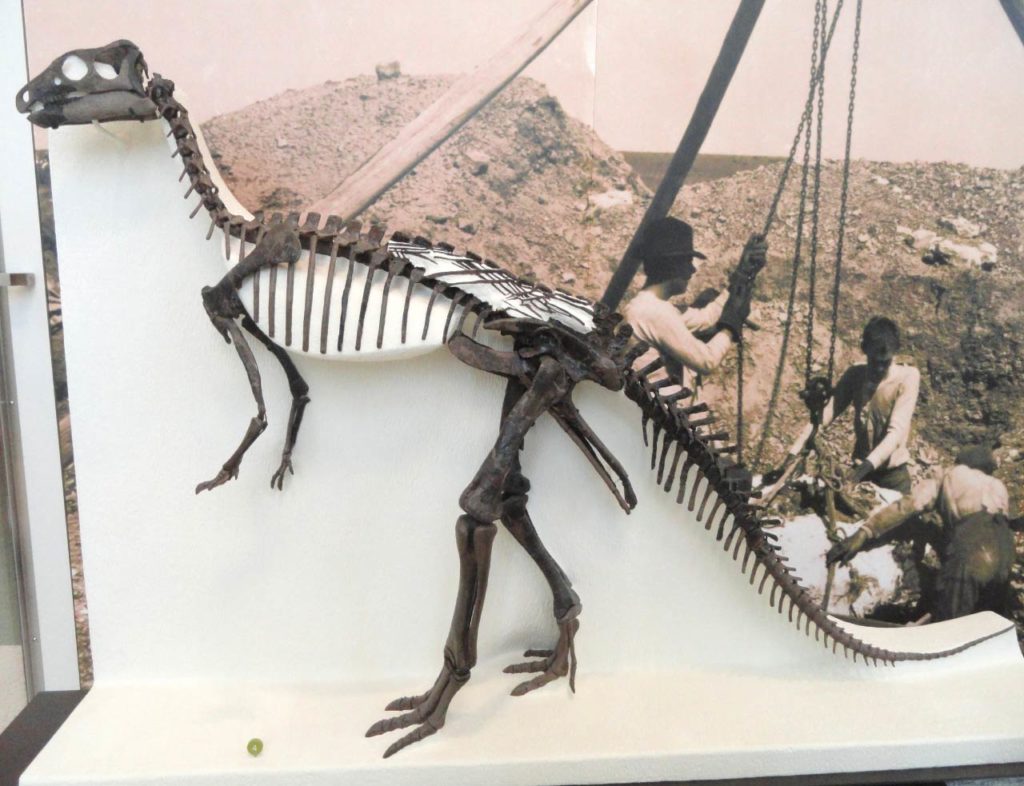

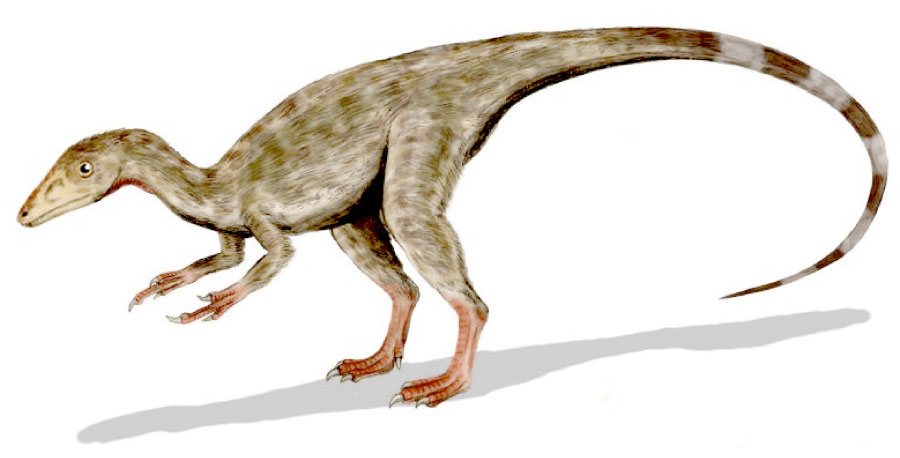

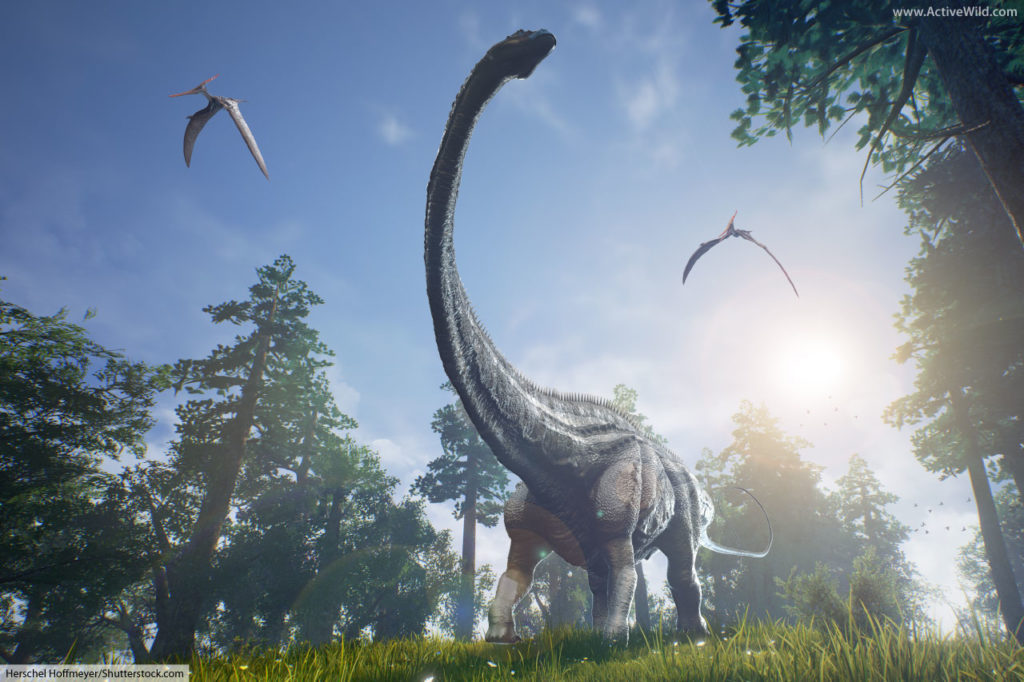


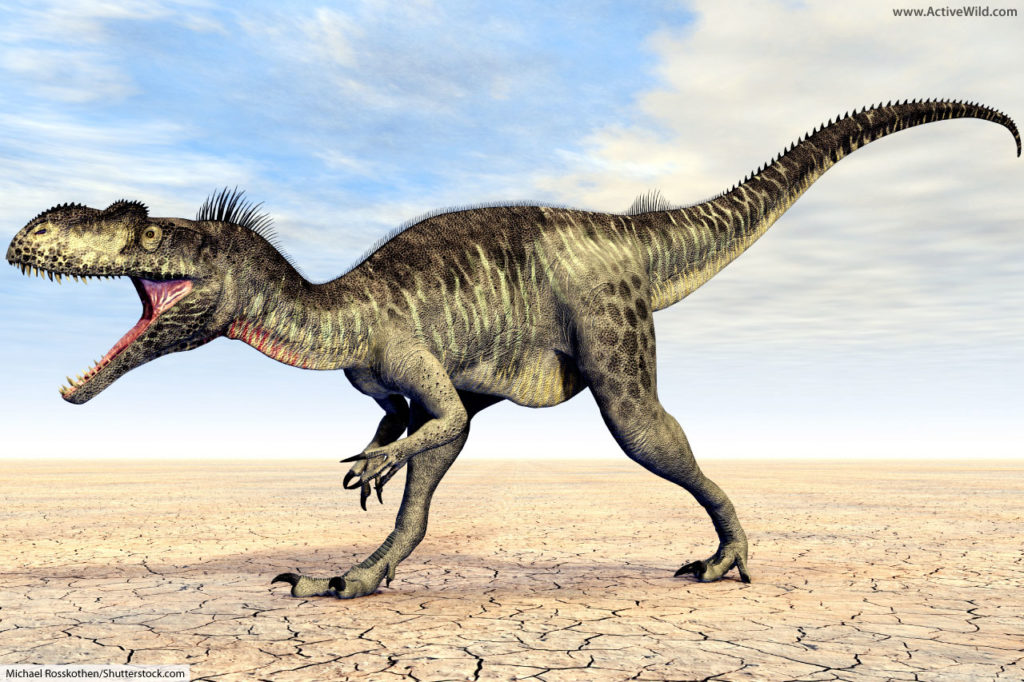

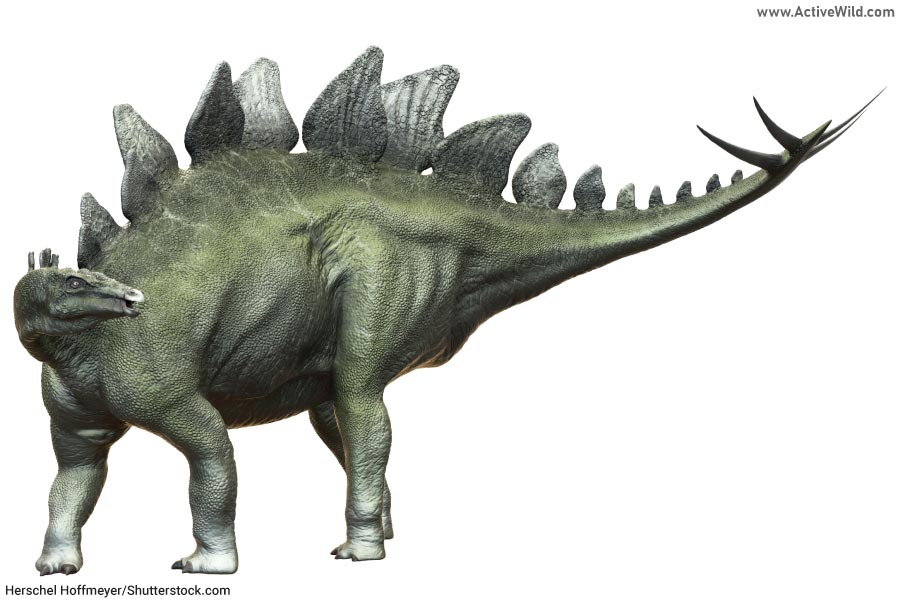
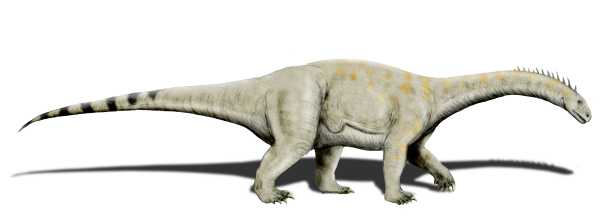

hello you said archaeoptreyx was 5 metres (20in) the inches are correct however i think you missed the ‘0.’ before the 5. 🙂
Well spotted! Thank you for letting us know 🙂
The Tyrannosaurus was called the king, but the Giganotosaurus was much larger and (likely) much more powerful.
1. Who was called “KING OF DINOSAURS” was it T-rex or Giganotosaurus?
2. What was the crest from Parasaurolophus for?
3. Were the three eras of dinosaurs called ” Mesozoic era”?
4. What is/are your favourite dinosaur/dinosaurs from the Jurassic period?
My favourite is every dino actually.
1. the T-Rex.
2. the crest was a mateing call ony for males it makes a really loud trumpit sound.
3.no.
4.my favorite dino is the ankylosaur.
What is your favorite dino?
Hi Snowflake,
Can we have two? Archaeopteryx (because it helped scientists to understand the relationship between dinos and birds) and T. Rex (just because).
What’s yours? 🙂
The Active Wild Team
T Rex.
Good choice! 👍
I hate T-REX🐱🐉🐱🐉🐱🐉🐱🐉🐱🐉🤢🤢🤢
🙁
Why?
Question, the T-Rex lived during the late Cretaceous Era, but in Jurassic Park, they had the T-Rex in the movie, didn’t anyone who made this movie checked their facts first?
That’s a great question, Tom.
You’re right, T. rex lived in the Cretaceous Period.
If the “Jurassic Park” in the book and film only included dinosaurs from the Jurassic Period, then T. rex (as well as other dinosaurs, such as Velociraptor and Triceratops) wouldn’t have been included.
However, because Jurassic Park was a theme park in which dinosaurs from various periods were “brought back to life”, it didn’t matter that they wouldn’t actually have lived together in real life.
There are lots of other inaccuracies in Jurassic Park, for example, Dilophosaurus didn’t spit venom, and the Velociraptors in the film were actually based on Deinonychus.
The makers of Jurassic Park (the film) did consult with experts, including palaeontologist Jack Horner, however, it wouldn’t have been much of a movie if everything was scientifically correct!
We hope this helps!
Regards,
The Active Wild Team
Pteranodons and Tyrannosaurus-rex
I love Mamenchisaurus.
Parasaurolophus. 🦖
were is the mosasaurus from jurassic world
Great question!
In fact, Mosasaurus wasn’t a dinosaur, and it wasn’t alive in the Jurassic period (it appeared in the Cretaceous period)!
You can find a list of animals that lived in the Cretaceous Period (that weren’t dinosaurs) on this page: Cretaceous Period Animals
Mosasaurs didn’t show up until the cretaceous period.. at the time, icthyosaurs, pliosaurs, and plesiosaurs swam the jurassic seas. Top predator in the ocean in the Jurassic was Liopleurodon
thanks
did you know a therizinosaurus claws are 3.3 feet long
Yes👍👍👍👍👍👍👍👍👍
cant name a single dinosaur that i didnt know 😆
Good work Cody! 🙂
I learnt a lot but I have a question is how fast is a Stegosaurus?
Hi Izzy,
Great question. The hind limbs of Stegosaurus were longer than its front limbs, which meant that it wouldn’t have been able to run very fast.
Its maximum speed would have been around 3.7 to 5 mph (6 to 8 km/h).
Regards,
The Active Wild Team
Wasn’t the Brontosaurus exposed as not being real, The body and the head being found many miles from each other?
Hi Stephen,
There has been quite a lot of controversy surrounding the classification of Apatosaurus / Brontosaurus.
Some authorities believe that the two genera are the same, while others believe they are separate.
Although a Brontosaurus skull hasn’t been found, the general opinion today is that Brontosaurus is/was real.
Many thanks for your interesting comment.
Regards,
The Active Wild Team
Where were Pterodactyls found?
the time frame it existed?
the type of dinosaur?
and it’s estimated lengths?
Hi,
Good questions! Pterodactyls aren’t dinosaurs, so you can read about them and other non-dinosaur Jurassic animals on this page: Jurassic Animals That Weren’t Dinosaurs.
You can also find out more about pterodactylus on this page: Pterodactylus Facts.
We hope this helps!
The Active Wild Team
you admin ……………………….. were is iguanodon
Check out this page: Cretaceous Period Dinosaurs List
this web is awsome
I agree Rikki, what do you like most about this website? I like ALL facts (wish there was more) and the pictures. to think these things used to live on our earth, is mind blowing.